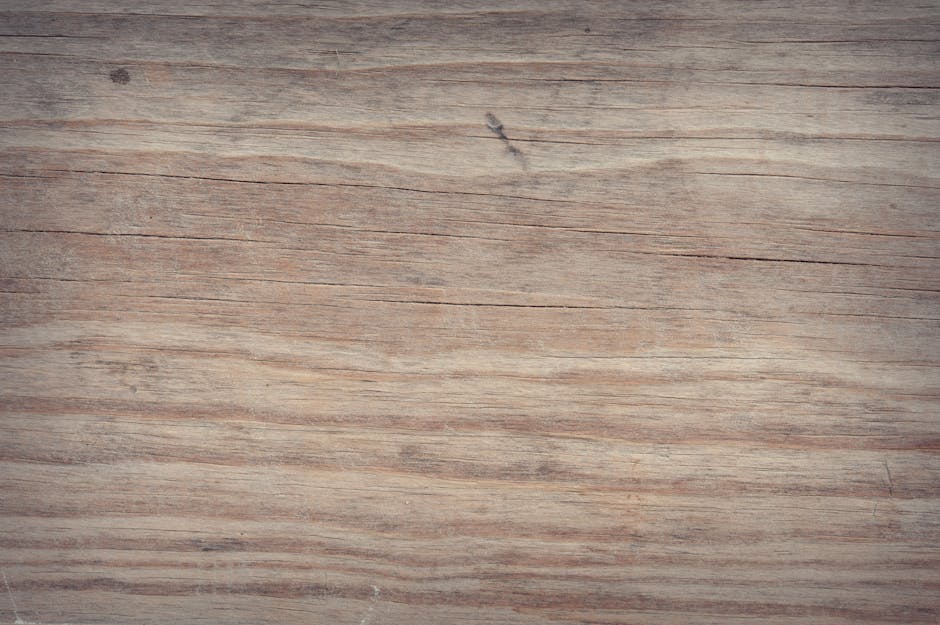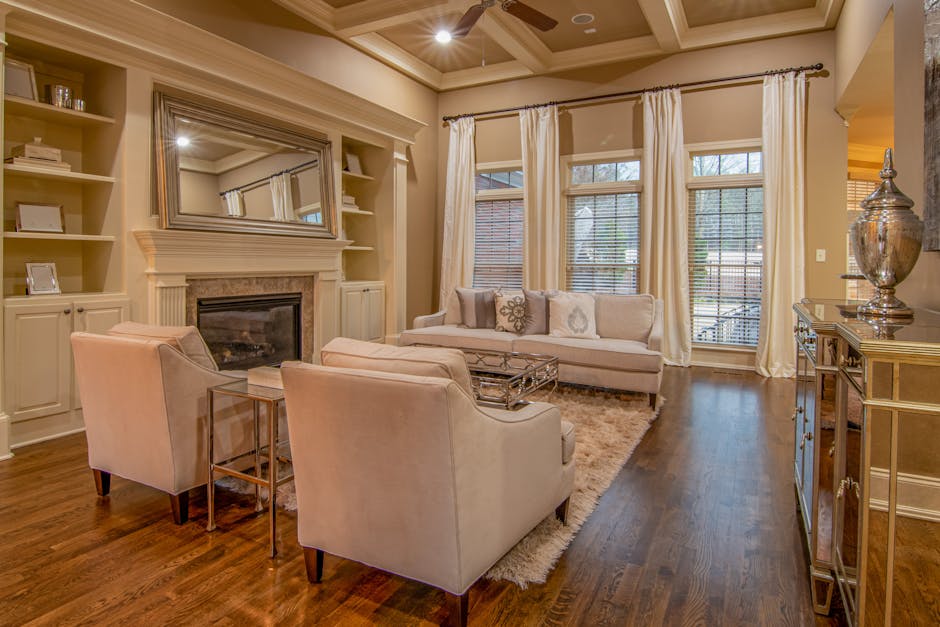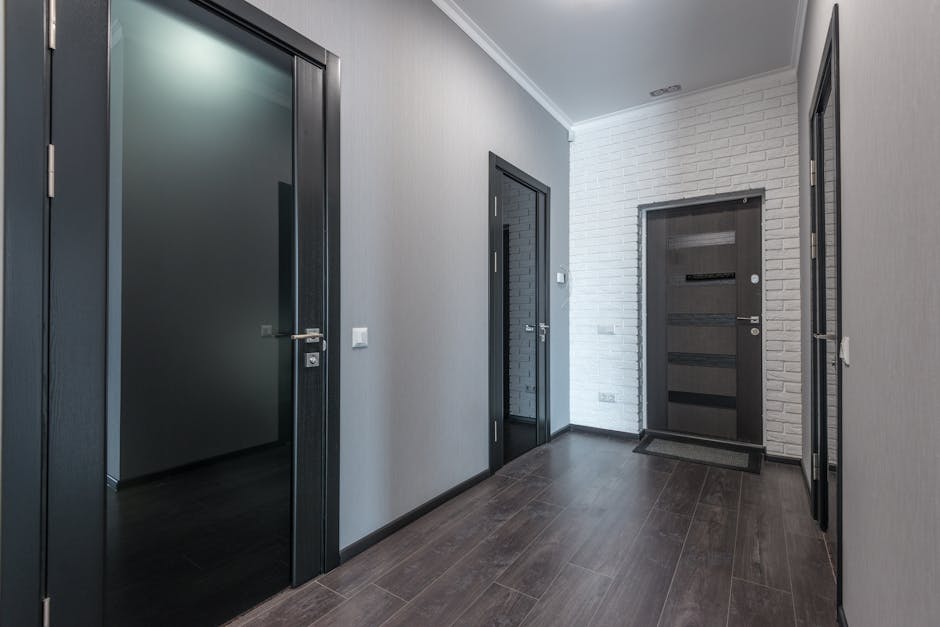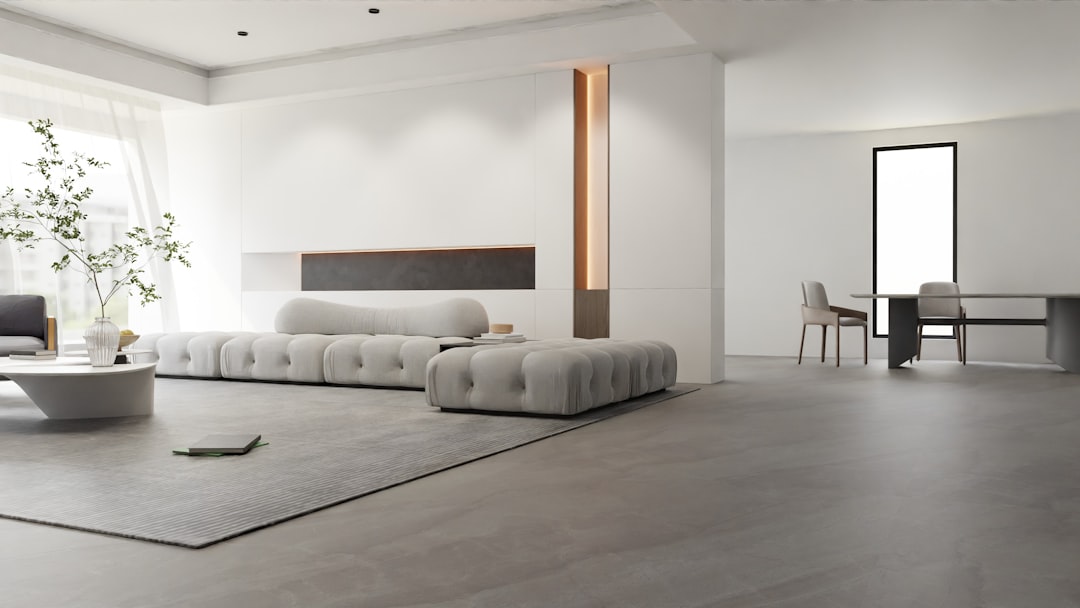When diving into interior design, one truth stands out: the color of your floor can make or break the aesthetic of a room with white walls. You need a floor color that complements, enhances, and brings out the best in your white walls. Briefly, here’s what you should consider:
– For a modern, minimalistic look: Go with white or light gray floors.
– To add warmth and a classic feel: Choose wood tones like oak or maple.
– For drama and sophistication in larger spaces: Dark hardwood or black floors are your go-to options.

Why does this matter? In your home, every room is a canvas, but the floor is the foundation that either ties everything together or throws the balance off. It’s not just about picking a color you like; it’s about creating harmony. White walls offer a versatile backdrop that can support a range of flooring options, allowing you to customize your space to reflect your style, whether it leans towards the bold and dramatic or the soft and serene.
Aesthetics are key. Choosing the right floor color to complement your white walls can transform your space, making it look larger, cozier, or more cohesive. It’s an important decision for any busy homeowner in San Diego looking for quality and longevity in their choice of flooring, especially when paired with the craftsmanship and reliability of a trusted flooring company, backed by a solid guarantee.
In the following sections, we’ll dive into how you can achieve the perfect balance between your white walls and floor color to create a beautiful, timeless space.
Understanding Wall and Floor Color Dynamics
When it comes to creating a harmonious space, understanding the dynamics between wall and floor colors is crucial. This section will guide you through the essentials of undertones, contrast, and visual space, helping you make the best floor color choice for white walls.
Undertones: The Secret Language of Colors
Every color speaks in undertones, and recognizing these subtle hints is key. White walls aren’t just white; they can have cool undertones like blue or warm ones like yellow. The best floor color for white walls depends heavily on these undertones. A white wall with cool undertones pairs beautifully with a floor that has a hint of gray, enhancing a crisp, modern vibe. On the other hand, white walls with warm undertones invite wood floors with golden or amber hints, creating a cozy atmosphere.
Contrast: Balancing Light and Dark
Contrast isn’t just black and white; it’s about balancing light and dark tones to create depth and interest. Pairing white walls with dark hardwood floors is a classic example, offering a striking visual appeal that draws the eye. However, the trick is not to overwhelm the space. Dark floors should serve as a grounding element, not dominate the room. Light wood floors can also create contrast with white walls by adding texture and warmth, making the room feel open and airy.
Visual Space: Creating the Illusion of More
Floor color can significantly affect how large or small a room feels. Lighter floors tend to make a room feel more spacious, reflecting more light and giving the illusion of a larger area. Dark floors, while stylish and sophisticated, can make a room feel smaller if not balanced correctly with light walls and decor. The key is to consider the room’s natural light and size when choosing the best floor color for white walls to either enhance the sense of space or create a cozy, intimate setting.
By understanding these dynamics, you can create a space that feels balanced and beautiful. The best floor color for white walls is one that complements the room’s undertones, balances contrast effectively, and considers the visual impact on space. With these guidelines, you’re well on your way to achieving a timeless look that feels just right.
In the next section, we’ll explore popular floor colors for white walls, providing you with practical examples and inspiration to help you make your decision.
Popular Floor Colors for White Walls
When it comes to pairing the best floor color for white walls, the options are as varied as they are beautiful. White walls serve as a blank canvas, allowing the floor to either stand out or blend in, depending on the desired effect. Let’s dive into some popular choices that can help you achieve the perfect look for your space.
Dark Hardwood

Dark hardwood floors are a classic and sophisticated choice that can add a dramatic contrast to white walls. The deep tones of walnut or mahogany create an elegant and timeless feel, making the room appear more grounded and cozy. This option works exceptionally well in spaces with ample natural light or high ceilings, as it prevents the room from feeling too stark or open. Though, dark hardwood can show scratches more easily, so it might require a bit more maintenance to keep it looking pristine.
Light Wood

For those seeking a more airy and spacious feel, light wood floors, such as oak or maple, are a perfect match for white walls. This combination creates a seamless transition from walls to floor, enhancing the sense of space and brightness in a room. Light wood floors are especially beneficial in smaller spaces or rooms with limited natural light, as they help to open up the area and make it feel larger than it is. Plus, scratches and dents are less noticeable, making it a practical choice for busy households.
Gray Wood Flooring

Gray wood flooring offers a contemporary twist on traditional wood floors, providing a neutral but modern palette that works well with white walls. This color can range from light, almost white-washed shades to deeper, charcoal hues, giving you plenty of versatility to match your style. Gray floors can soften the contrast between the floor and white walls, creating a cohesive look that’s both stylish and understated. It’s an excellent choice for those wanting to blend classic and contemporary elements in their design.
Matching Tips
When choosing the best floor color for white walls, consider the room’s natural light, the size of the space, and the overall atmosphere you want to create. Dark hardwood might be your go-to for adding warmth and drama, while light wood can make a room feel more open and airy. Gray wood flooring, on the other hand, offers a modern and versatile backdrop that can suit various decorating styles.
Regardless of the color you choose, ensure it complements the undertones of your white walls. Cooler whites pair well with floors that have gray or blue undertones, whereas warmer whites work best with floors that carry hints of beige or yellow.
By selecting the right floor color to match your white walls, you can create a space that feels harmonious and tailored to your personal taste. Whether you’re drawn to the richness of dark hardwood, the freshness of light wood, or the contemporary feel of gray flooring, there’s a perfect match for your white-walled room.
How to Match Floor Colors with White Walls
When you’ve got white walls, choosing the right floor color can seem like a daunting task. But don’t worry, it’s all about understanding a few key principles: Undertone Matching, Complementary Colors, and the debate between Light vs. Dark Floors. Let’s dive into each of these to help you find the best floor color for white walls.
Undertone Matching
First things first, let’s talk about undertones. Every color, including white, has an undertone. These can be warm (yellow, red, orange) or cool (blue, green, purple). To create a cohesive look, it’s crucial to match the undertone of your white walls with your flooring. If your walls have a cool undertone, consider floors with a similar coolness or go for a contrasting warm floor to add depth. A handy trick is placing a white sheet of paper next to your floor sample to reveal its true undertone.
Complementary Colors
Understanding Wall and Floor Color Dynamics
When it comes to pairing floor colors with white walls, think about balance. The secret lies in complementary colors, which are colors that sit across from each other on the color wheel. They work together to create a lively and harmonious look without clashing. With white walls as your backdrop, choosing floor colors that softly contrast can truly make your space stand out. If you’re considering wood flooring, opt for a floor color that has an undertone opposite to that of your white walls. Warm-toned woods like cherry or mahogany can offer a stunning contrast against cool-toned white walls, and the other way around, bringing a dynamic yet cohesive feel to the room.
Light vs. Dark Floors
The debate between light and dark floors is ongoing, but here’s a simple way to decide: consider the size and natural lighting of your room. Light floors can make a small room appear larger and brighter, especially when paired with white walls. Dark floors, on the other hand, add warmth and sophistication, making them ideal for large, well-lit spaces. It’s generally recommended to go at least three shades lighter on the walls than the floors for the perfect balance.
Best Practices:
- Room Size: Smaller rooms benefit from lighter floors to create an illusion of space.
- Natural Light: Assess the amount of natural light your room gets before deciding on the floor color. Lighter floors can brighten up a dark room.
- Furniture: Consider your furniture and decor. Dark floors can ground light-colored furniture, while light floors can complement darker pieces.
By understanding these key principles, you’re well on your way to selecting the perfect floor color to complement your white walls. Whether you choose a light wood to brighten up your space or a dark hardwood for a touch of elegance, the right floor color can enhance the overall aesthetic of your room. For more inspiration and expert advice, consider reaching out to professionals like California Flooring & Design, who can provide personalized recommendations based on your specific needs and preferences.
Moving on, let’s address some frequently asked questions about floor colors for white walls to clear up any remaining doubts.
Best Practices for Choosing Floor Colors
When it comes to selecting the best floor color for white walls, there are a few key factors you should consider to ensure your space looks its best. Let’s dive into these aspects:
Room Size
- Small Spaces: Lighter floors can make a room feel more open and airy. If you’re working with a cozy space, consider pale woods or luxury vinyl in light shades.
- Large Rooms: Darker floors can add warmth and definition. They work well in spacious rooms, creating a cozy atmosphere.
Natural Light
- Abundant Light: If your room gets a lot of sunlight, you have the freedom to choose between light or dark floors. Dark floors won’t feel overwhelming in a well-lit room.
- Limited Light: In rooms with less natural light, lighter floors can help brighten the space and make it feel more welcoming.
Furniture
- Matching Tones: Consider the color and style of your furniture. Light floors can complement modern and minimalist styles, while dark floors are ideal for traditional or rustic furnishings.
- Contrast: For a bold statement, choose a floor color that contrasts with your furniture. Dark floors with light furniture or vice versa can create a visually striking space.
California Flooring & Design
- Expert Advice: Don’t hesitate to seek professional guidance. Companies like California Flooring & Design offer in-home consultations to help you visualize different options in your actual space.
- Personalized Recommendations: They can provide recommendations tailored to your room’s size, lighting, and your personal style, ensuring you make a choice you’ll be happy with for years to come.
By considering these factors, you’ll be better equipped to choose a floor color that complements your white walls and enhances the overall aesthetic of your room. The best floor color for white walls depends on your unique space and style preferences. Whether you’re leaning towards a light, airy feel or a cozy, warm atmosphere, there’s a flooring option out there that’s perfect for you.
Frequently Asked Questions about Floor Colors for White Walls
When it comes to finding the best floor color for white walls, several common questions arise. Let’s dive into these queries with straightforward answers to guide you in making the perfect choice for your space.
Should floors be darker or lighter than walls?
The choice between darker or lighter floors with white walls often boils down to personal preference and the specific dynamics of the room. Darker floors tend to offer a striking contrast to white walls, creating a bold and sophisticated look. They can make large, well-lit rooms feel cozier and more grounded. On the other hand, lighter floors can make a space feel larger and more open, promoting a serene and airy atmosphere. It’s also worth noting that lighter floors are generally more forgiving when it comes to showing dust and scratches.
Do white walls go with dark floors?
Absolutely, white walls pair beautifully with dark floors. This combination is timeless and can add a dramatic flair to your space, emphasizing the elegance of the room. Dark floors, such as black, dark brown, or deep grey, can serve as a powerful grounding element, making your white walls pop and creating a visually stunning contrast. This pairing works exceptionally well in rooms with ample natural light or higher ceilings, as it balances the brightness and volume of the space without making it feel enclosed.
What is the best color combination for floors and walls?
The best color combination for floors and walls depends on the effect you wish to achieve in your room. Here are a few combinations that work wonderfully with white walls:
-
White on White: For a minimalist, modern look, pairing white walls with white floors can open up a space, making it appear larger and brighter. This combo allows for creative freedom with colorful accents and furniture.
-
Grey Wood Flooring: Grey floors offer a contemporary edge that complements white walls without the stark contrast of black. It’s versatile, working well in both small and large spaces, and it hides dirt effectively.
-
Natural Wood Tones: Warm wood tones like oak, maple, or cherry add warmth and texture, creating a welcoming, cozy feel. This combination is classic and works across various design styles, from rustic to modern.
-
Black or Dark Floors: For those who love a bold, dramatic look, dark floors with white walls are the way to go. It’s a sophisticated choice that pairs well with a variety of decor styles.
In the end, the key is to consider the size of your space, the amount of natural light it receives, and your personal style. Experiment with samples in your actual space to see how different floor colors interact with your white walls under various lighting conditions throughout the day. The goal is to create a harmonious balance that reflects your taste and enhances the beauty of your home.
Conclusion
Choosing the best floor color for white walls isn’t just about following trends; it’s about making informed decisions that reflect your personal style and meet the practical needs of your space. Whether you opt for the warmth of dark hardwood, the brightness of light wood, or the modern appeal of gray flooring, the key is to ensure harmony and balance in your room’s aesthetics.
At California Flooring & Design, we understand the importance of finding the perfect match for your white walls. Our extensive selection of flooring options ensures that you’ll find the ideal shade and material to complement your home’s decor. We encourage you to take advantage of our design services and to bring samples into your home to see how they look in your unique lighting conditions. This hands-on approach will help you make a choice that you’ll be happy with for years to come.
The right flooring can transform a room from good to great. It’s not just about the color; it’s about the feeling it evokes, the warmth it brings, and how it complements the rest of your home. With the right guidance and a clear understanding of your needs, you can find the best floor color for your white walls that will enhance the beauty and comfort of your living space.
For more inspiration and expert advice, visit our hardwood flooring page. Let us help you make your flooring dreams a reality. At California Flooring & Design, we’re more than just a flooring company; we’re your partners in creating a home you love.
Choosing the right flooring is a significant decision, but it doesn’t have to be overwhelming. With the right information, support, and resources, you can confidently select a floor color that complements your white walls and brings your vision for your home to life.



